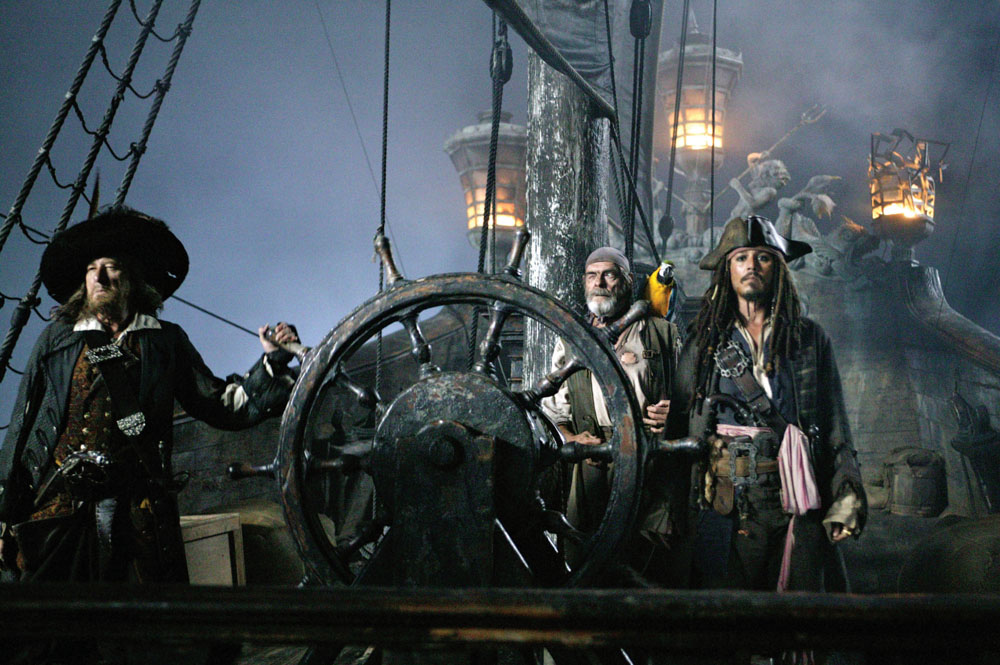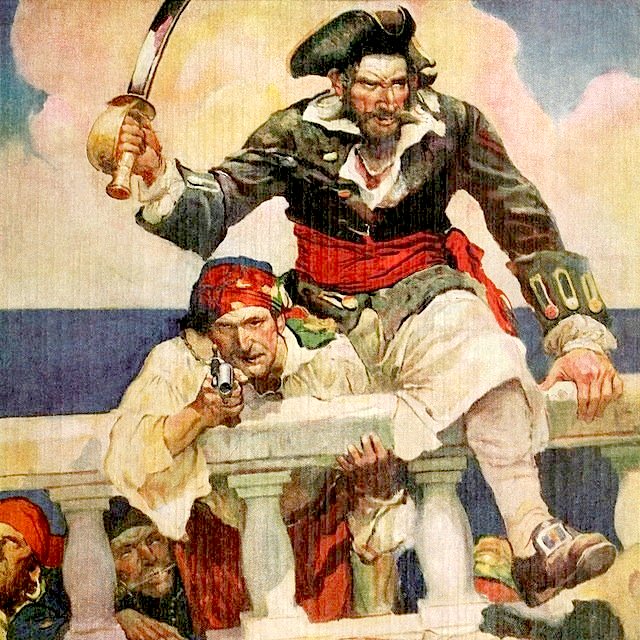
Made
famous again by the Disney series of pirate films, Tortuga and Port
Royal must be included in any yarn about piracy, to give the stories an
authentic flavour.
Operating out of their bases at Port Royal and Tortuga, the 'Brethren of the Coast' were not pirates in the sense they were conquerors. Buccaneers raided ships at sea when it was convenient for them but they also had massive armies with which they would militarily take out Spanish troops and invade settlements from the land. They were known for sacking and ransoming cities,
but fortunes were smaller than 18th century pirates in that they had more men to
support from their plunder.
TORTUGA
Tortuga is an island located in the
Caribbean as the northwest part of Hispaniola. In the 17th century, it became established as a safe haven for Buccaneers. Alongside Port Royal, the island was the strongest and safest port in the mid-17th century, a place from where the early pirates launched numerous attacks on Spanish colonies.
From 1630, the island of Tortuga was divided into French and English colonies. It provided a good base for Buccaneers' attacks, as well as slave trading. Tortuga saw two successful Spanish raids in 1635 and 1638, and both times defending Buccaneers managed to keep
possession of the island.
In 1639, to fortify the island the governor of nearby Saint Christopher (now St. Kitts) sent help in Jean Le Vasseur, who was promoted to the new governor of Tortuga. He built the stone fortress “Fort de Rocher” on the highest rise of the island. The fort was armed with 40 guns and overlooked any vessels in or near the
port, much to the annoyance of Spain.
Some of the greatest Buccaneers such as Henry Morgan and Francois L'Ollonais launched attacks from Tortuga and became part of island history.
PORT ROYAL
As the area commanded a large and well-protected harbour, along with deep
water close to shore, Port Royal soon became an important trading centre in the Caribbean. Due to its tremendous wealth, Port Royal required protection from the enemies of England, especially Spain, who may have had thoughts of recapturing Jamaica. Thus, a form of legalised piracy was allowed, in which pirates were given ‘letters of marque and reprisal’, a government license authorizing privateers to attack and capture enemy vessels and bring them before admiralty courts for condemnation and sale. This effectively authorised their raids on Spanish ships.
Due to its strategic position on the trading routes between the New World and Spain, Port Royal was a highly attractive place for pirates who sought to become legitimate privateers. One of the most famous and successful privateers at Port Royal was Henry Morgan, who eventually became the Lieutenant Governor of Jamaica.
The presence of the privateers and their Spanish booty encouraged other forms of businesses. Soon, bars and brothels popped up all around Port Royal where the privateers spent their treasures and indulged themselves. It has been claimed that one in four buildings in Port Royal was either a bar or a brothel. The presence of these establishments in such number soon earned Port Royal the title of the “wickedest city on Earth”.
Port Royal’s glory days come to an end when a massive earthquake and tsunami struck in
1692, when much of Port Royal was swallowed up by the sea,
along with the privateer's grave. His buried
treasure was never recovered from the island.
In the immediate aftermath of the earthquake, it was common to ascribe the destruction to divine retribution
for their sinful ways of the occupiers. Members of the Jamaica Council declared:
"We are become by this an instance of God Almighty's severe judgement."
Port Royal would never achieve the ‘splendour’ it once had, it was soon overshadowed by the city of Kingston, the present capital of Jamaica. Today, Port Royal is a sleepy
fishing village. However, the submerged remains of Port Royal are in an excellent state of preservation, allowing archaeologists to study and learn about the
pirates and privateers who lived there during the 17th century.
As
a sunken city, Port
Royal is the inspiration for a John
Storm ocean awareness adventure, featuring the Elizabeth
Swann, an artificially intelligent ship, powered by renewable
energy.
LINKS & REFERENCE
http://www.blackpearltales.net/erins_site/History.html
http://www.historytoday.com/david-cordingly/pirates-and-port-royal
http://www.bbc.co.uk/news/world-latin-america-18601357
http://priceless-caribbean.com/port-royal-discover-the-real-pirates-of-the-caribbean/
http://pirates.wikia.com/wiki/Timeline_of_Pirates_of_the_Caribbean_series
http://www.sheppardsoftware.com/carribeanweb/factfile/Unique-facts-Caribbean7.htm
http://en.wikipedia.org/wiki/Port_Royal
http://www.wordandfilm.com/2011/05/the-real-pirates-of-the-caribbean-what-the-movies-got-wrong/

....
Please use our
A-Z INDEX to
navigate this site

